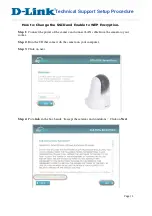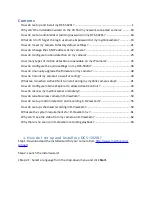
Review of Camera Performance and Features
•
33
Establishing the Desired Response
One of the important performance characteristics of the camera that will determine its suitability
for an application is its responsivity and the associated no
ise level at the system’s maximum line
rate and under the desired illumination conditions and lens configuration.
Responsivity and noise performance can be assessed using a stationary plain white target under
bright field illumination or by using no target for rear bright field illumination.
To accurately evaluate the camera’s responsivity and noise performance it is important that the
camera setup is representative of the system configuration.
The ideal test setup meets the following conditions:
•
The lens is in focus, at the desired magnification, and with the desired aperture.
•
The illumination intensity is equal to that of the Automatic Optical Inspection (AOI) system
and is aligned with the camera’s field of view.
•
The camera is operated with an exposure time that will allow the maximum line rate of the
system to be achieved. The camera’s internal line rate generator and exposure control can
be used for a stationary target.
Exposure Mode
See the section Camera Control Category in Appendix A for GenICam features associated with this
section and how to use them.
Related Features:
ExposureMode: Timed. Timed is the standard exposure operation as found in Teledyne DALSA line
scan cameras. See the Exposure Control Section.
Line Rate Jitter
If the exposure time is close to the line period there could be jitter in the line rate when it is
synchronized to the sensor clock if ExposureMode = Timed. With Exposure mode off there is no
jitter in the line rate. If trying to coordinate a LED strobe with the exposure of the sensor it is
important to be away of this jitter and make sure the LED is on long enough to account for this.
Exposure Control
See the Camera Control Category section in Appendix A for GenICam features associated with this
section and how to use them.
The camera has the following exposure mode(s):
•
Timed: where the sensor rows are exposed at the same time.
Use exposureTimeSelector to select whether to set the exposure time of each row independently or all
to the same value. Adjusting the exposure will result in a temporary loss of LVAL (8 lines) while the
sensor is re-configured.














































